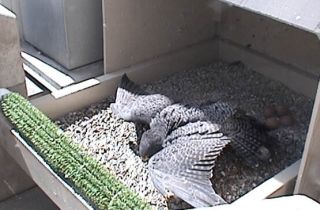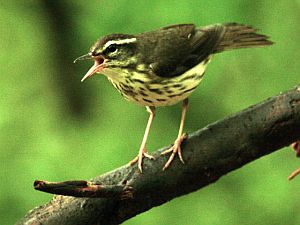
If you want to see birds up close, go to where the birds are, sit down on the ground and eat your lunch.
I’m not kidding! But first you have to understand the context.
I was prepared for rain last Sunday so I was wearing a big floppy hat and a yellow rain slicker over my backpack. This gave me a big head and a hunchbacked look.
I was in one of the best spring birding places in Pennsylvania: Enlow Fork, literally the “Enlow Fork of Wheeling Creek” which forms the border between Washington and Greene counties, almost in West Virginia.
I was the only person there – even the fishermen weren’t on the scene – and the sky looked ominous. It rained off and on.
I moved slowly. The hungier I got, the slower I moved. When it rained at lunchtime, I took shelter at the second bridge and opened my crinkly lunch bag. Imagine a bird’s perspective: a creeping yellow hunchback with a floppy green head making crinkly sounds. How intriguing!
Zip! A yellow-throated warbler flew past my left shoulder, stopped on the bridge for a quick glance and he was gone.
Chink! A Louisiana waterthrush, pictured above by Chuck Tague, perched across the creek and sang a challenge to me. How dare something so weird sit in his territory!
The rain came down harder. I crept into better shelter and the Louisiana Waterthrush flew up for a better look. Perched on the bridge just above eye level, he took a bath in the rain. Awesome!
Bonus sightings:
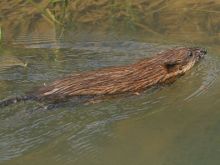 While standing above a small pond, I saw a muskrat swim by carrying leaves. He went back and forth several times without noticing me.
While standing above a small pond, I saw a muskrat swim by carrying leaves. He went back and forth several times without noticing me.
Finally I couldn’t stand the suspense. Animals often recognize a human voice faster than a human shape, so I spoke to the muskrat. “Hello, Muskrat.” He froze immediately, feet splayed out, but he kept drifting forward. Ha! He’s not hidden with those waves moving out ahead of him!
Chuck Tague tells me muskrats are oblivious. This one proved it.

And finally, though Enlow Fork is known for its wildflowers the rain kept most of them closed. Not so with the Virginia Bluebells as you can see in this photo from my cellphone.
So if you want to see birds up close, put on a big floppy hat, and sit in the rain. It works for me!
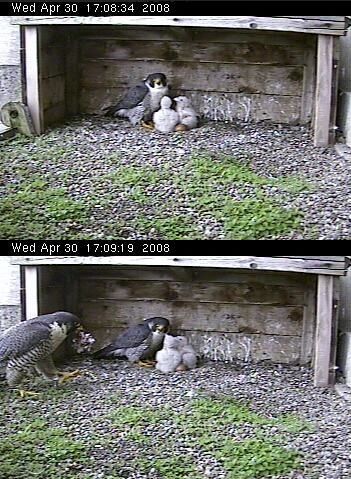
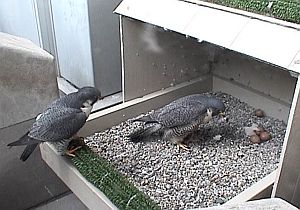
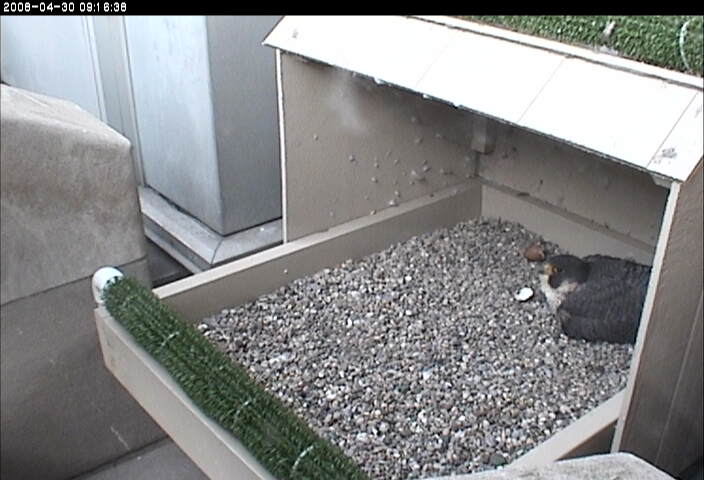
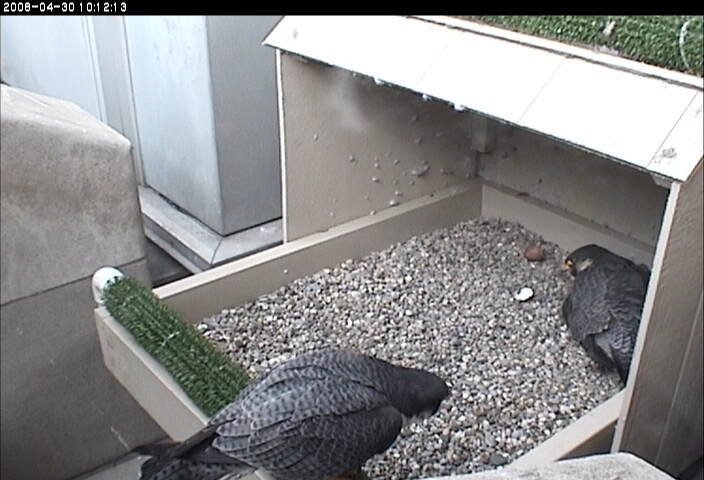
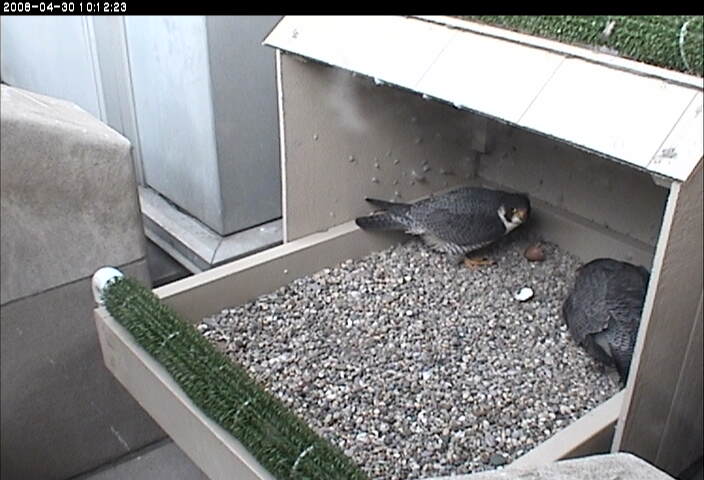
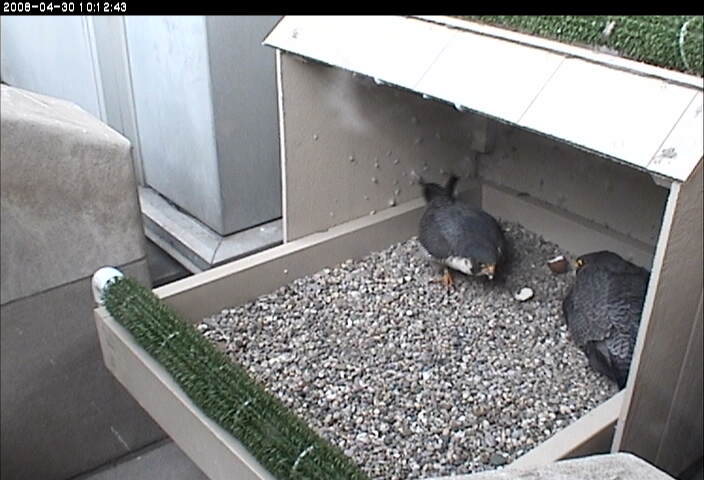
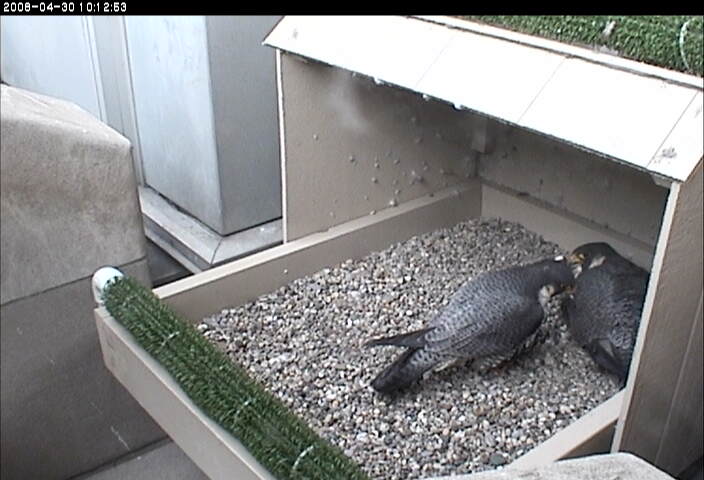
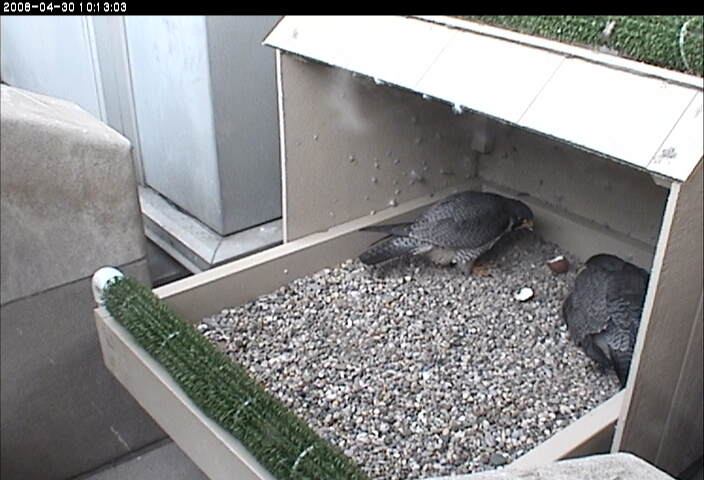
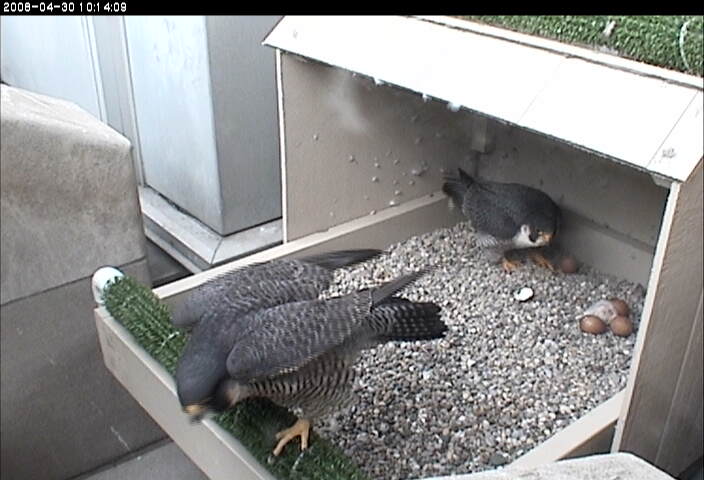
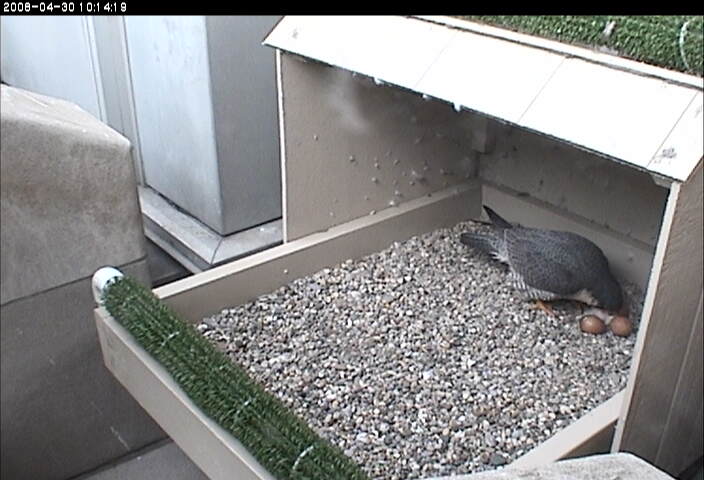
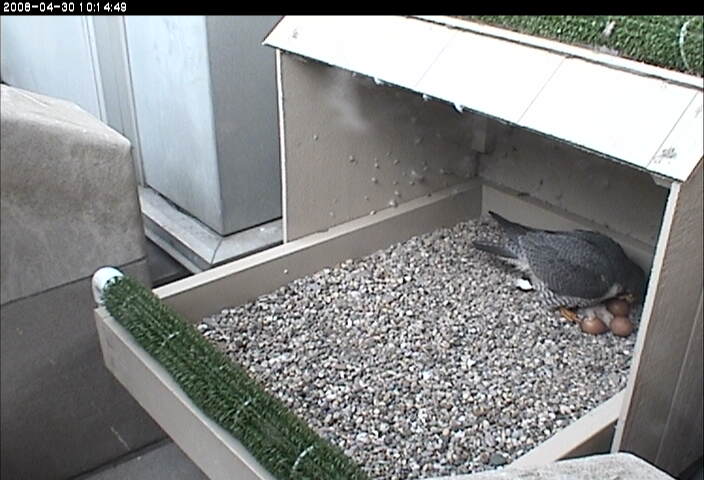

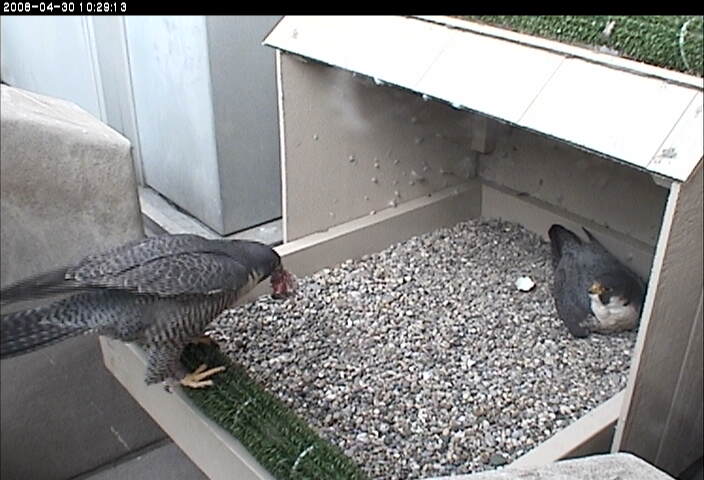
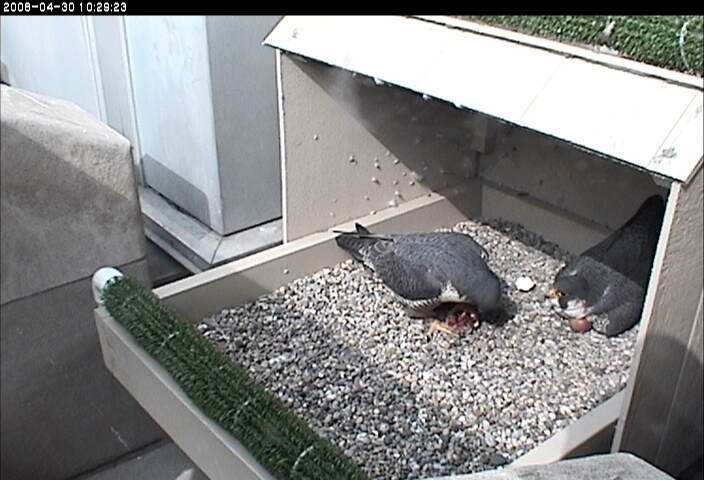
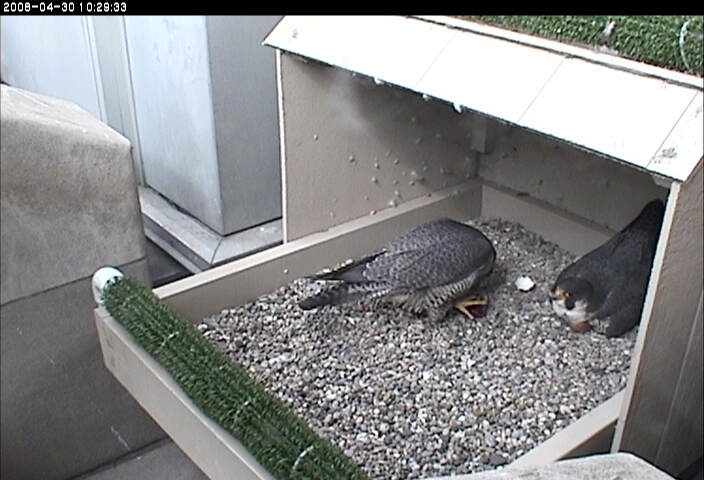

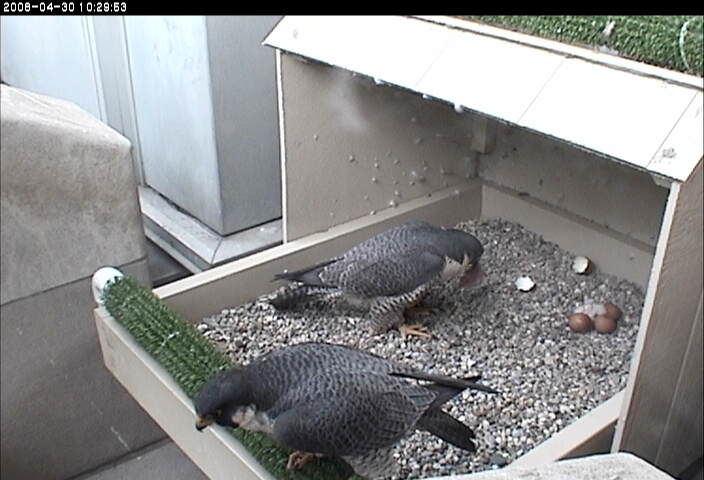
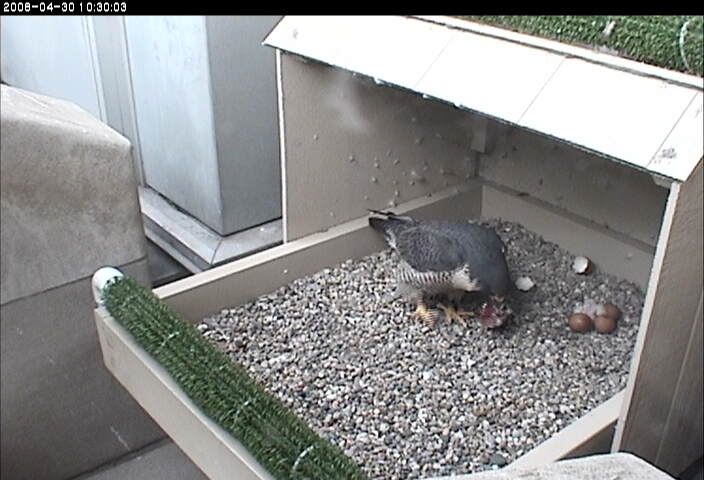
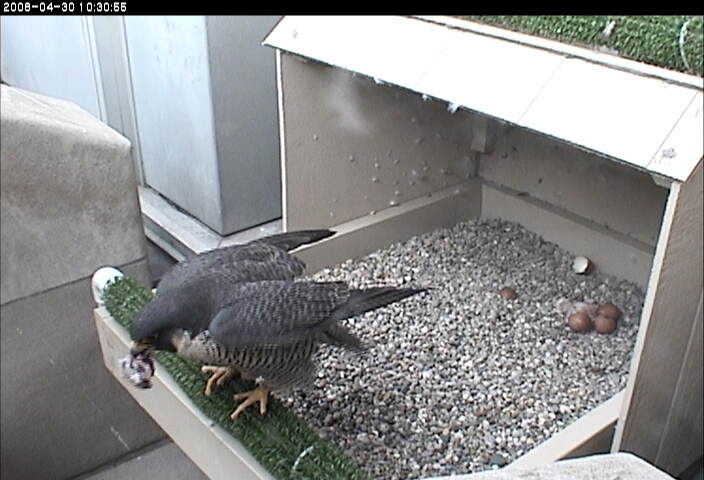
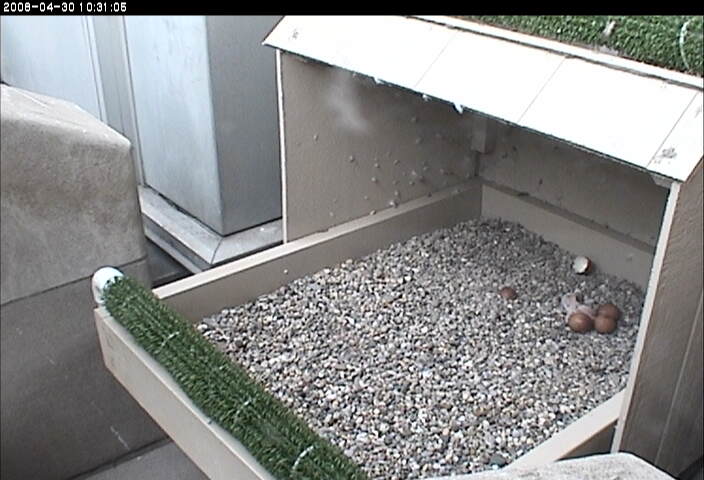
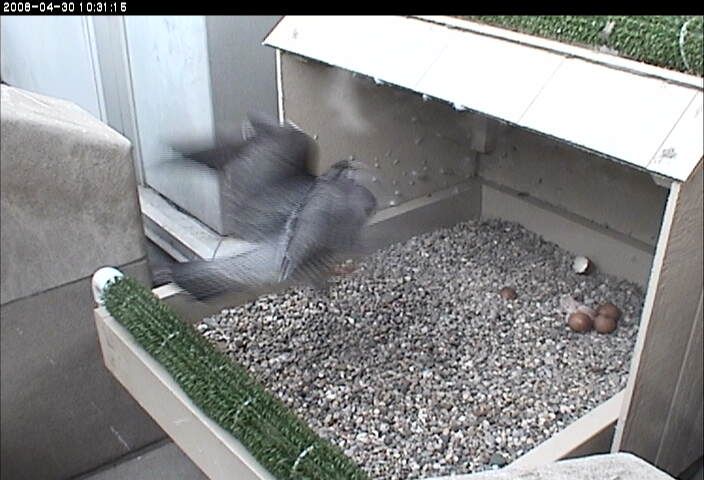
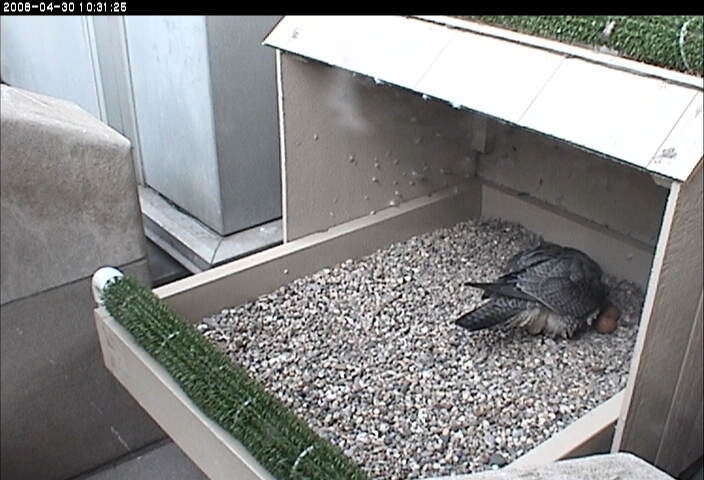

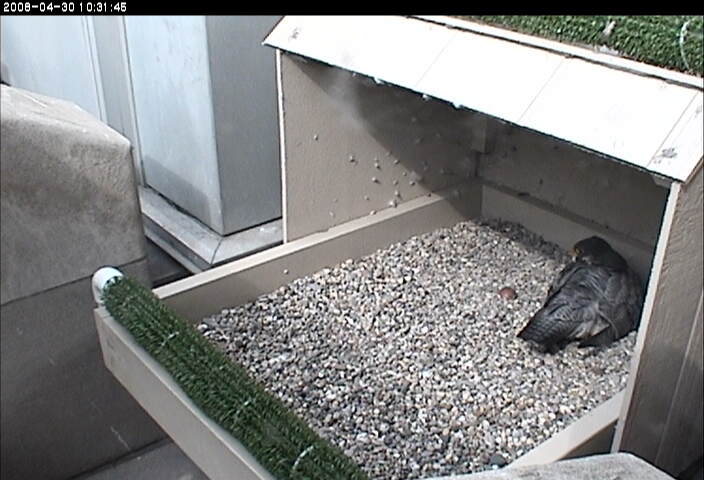
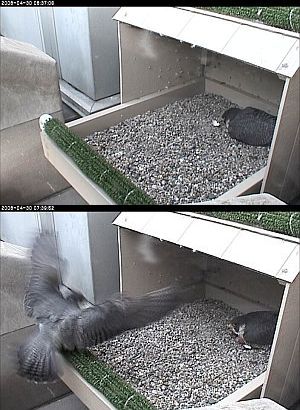 This morning at 8:07am I got a call from my friend Karen Lang. She saw an eggshell next to Dorothy so we knew the eggs had begun hatching at the University of Pittsburgh peregrine falcon nest. Congratulations to Dorothy and E2!
This morning at 8:07am I got a call from my friend Karen Lang. She saw an eggshell next to Dorothy so we knew the eggs had begun hatching at the University of Pittsburgh peregrine falcon nest. Congratulations to Dorothy and E2!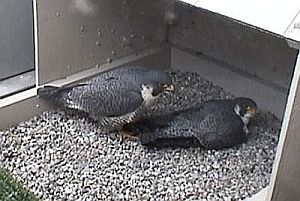 I believe the peregrine falcon eggs will hatch soon at Pitt. Compared to last week, Dorothy is spending more time incubating than E2. In this picture she seems to be telling him, “Get up! It’s my turn.” She has years of experience hatching eggs while this may be his first year as a dad.
I believe the peregrine falcon eggs will hatch soon at Pitt. Compared to last week, Dorothy is spending more time incubating than E2. In this picture she seems to be telling him, “Get up! It’s my turn.” She has years of experience hatching eggs while this may be his first year as a dad.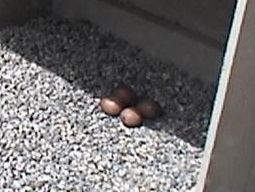 And maybe – just maybe – the photo at right shows some pips (dents) in the eggs. If so, the chicks are starting the exhausting job of breaking the shells.
And maybe – just maybe – the photo at right shows some pips (dents) in the eggs. If so, the chicks are starting the exhausting job of breaking the shells. Last week the trees put on their best apparel, all decked out in flowers. The weather was fine – not cold like today. Here are some memories from last week’s beautiful weather, captured on my cell phone camera.
Last week the trees put on their best apparel, all decked out in flowers. The weather was fine – not cold like today. Here are some memories from last week’s beautiful weather, captured on my cell phone camera.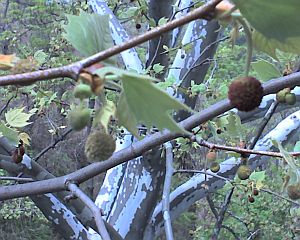 A London plane tree in Greenfield sporting red and green balls. The balls are covered with the tree’s tiny flowers. When the flowers are fertilized, the balls become seeds that break up and float away in the wind the following spring.
A London plane tree in Greenfield sporting red and green balls. The balls are covered with the tree’s tiny flowers. When the flowers are fertilized, the balls become seeds that break up and float away in the wind the following spring.
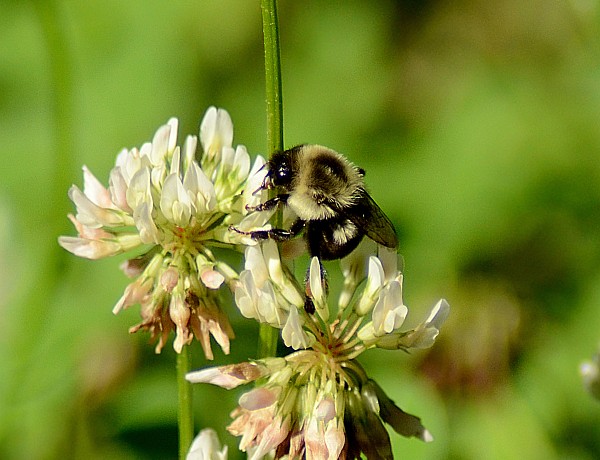

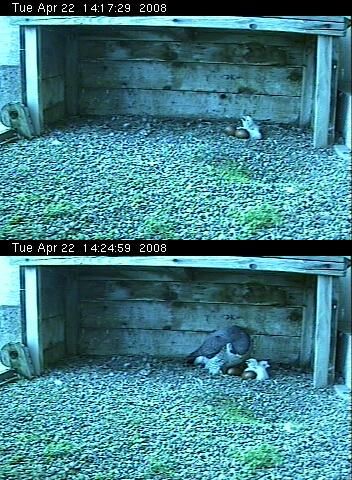 Pictures are worth a thousand words.
Pictures are worth a thousand words.
 While standing above a small pond, I saw a
While standing above a small pond, I saw a 
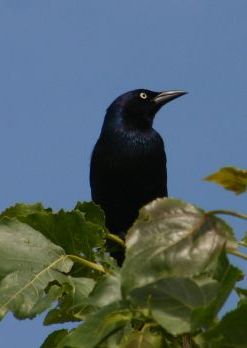 It’s been six weeks since the first common grackles came back to Pittsburgh for the summer. (We don’t have great-tailed grackles; they’re a southwestern bird.)
It’s been six weeks since the first common grackles came back to Pittsburgh for the summer. (We don’t have great-tailed grackles; they’re a southwestern bird.)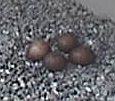 I’m sure you’re beginning to wonder how much longer the peregrine falcons must incubate their eggs. It’s been going on a long time and they aren’t done yet. So when’s the happy day?
I’m sure you’re beginning to wonder how much longer the peregrine falcons must incubate their eggs. It’s been going on a long time and they aren’t done yet. So when’s the happy day?